#Glencoe massacre
Explore tagged Tumblr posts
Text
A hoard of coins linked to a Highland chief – which may have been stashed away as he tried in vain to escape the Glen Coe massacre – has been discovered underneath a fireplace.
The 17th-century collection of 36 coins included international currency, and was hidden beneath the remains of a grand stone fireplace at a site believed to have been a hunting lodge or feasting hall.
The site was associated with Alasdair Ruadh “Maclain” MacDonald of Glen Coe, the clan chief from 1646-92, who, along with his family, was a victim of the massacre that followed the first Jacobite rising.
The MacDonalds took part in the 1689 effort to restore the Catholic James II of England and Ireland and VII of Scotland, after his deposition by his Anglican daughter Mary and her husband, William of Orange.
As government forces quelled the rebellion and sought to enforce peace terms, the clan was targeted – ostensibly for being among those to have failed to take an oath of allegiance to the Protestant monarchs in time. An estimated 82 clan members were killed on 13 February 1692; including Maclain and his wife.
Artefacts discovered at “the summerhouse of Maclain”, included European pottery, and silver and bronze coins, dating from the 1500s to 1680s, during a University of Glasgow dig in August.
14 notes
·
View notes
Text
Diary of a Baggage Train: Day 9
I wake up on the West Highland Way Practically. From my hotel window, I can see a small tent encampment on the other side of the river and beyond that the grass and scree-covered slope of Meall Bhalach. This should be themoment in which I nestle down into the soft mattress and clean linens and gaze lovingly at the electric kettle. Instead, I’m consumed with jealously. Because, however grubby their sleeping bags and however much their morning porridge tastes like the spag bol from the night before, the campers have something I don’t: air. Heaps and heaps of glorious Glencoe air. I’ve spent the night sprawled on top of the duvet as a Dyson fan buffeting my body – it is quite a fancy hotel – because we’re not allowed to open the window. The Kingshouse Hotel is a stunning, secluded, fancy-as-fuck wilderness retreat… I’m so happy to be out of there and back with the cavalcade of touring roadsters. We’re on the stretch used for the car chase in Skyfall and are consequently creeping along, stopping at every pullover. I love how different my Roadtrippers are from the backpackers. Determined to get the best photos by climbing everything, they treat every rock as a major impediment, frequently banding together to pull each other up and over as if their sheer numbers will make up for their ill-suited footwear. A woman gestures to her victorious partner to throw his arms wide to celebrate his ascent. He insists on posing with one hand on his chin with his other hand on his elbow, a pose perhaps best suited to dated portraiture than to long-distance nature photography.
The film at Glencoe Visitor Centre tells a simple tale with a tumultuous beginning, a tragic middle, and a happy end. In the beginning, 400 million years ago, were the volcanos. The land the fire formed was hard and unforgiving, and it made life hard and unforgiving for the people who eventually settled there. We move swiftly on to 300 years ago and the focus of the bespoke film: the Glencoe Massacre. By animating some simple pen and ink illustration, layering in a lot of snow and blood, and adding a sonorous narrator, the film evokes the treachery of the King’s troops turning on their hosts, the MacDonalds. That the government of the new Hanoverian king signed an order to slay every member of the clan under the age of seventy appears almost secondary to the most heinous crime: the soldiers stayed twelve days under the MacDonald roofs before murdering them. From this frozen genocide, we hop over the final Jacobite rebellion and skip to the Romantic artists, who could always use some Highland tragedy to whet their whistle. The last act is the estimable work of the National Trust for Scotland to preserve the land and keep it as sparsely populated as it was then, but also as welcoming.
I move past tourists taking selfies with Highland cattle and step into the recreated MacDonald hut. As building Highland huts is no longer a lucrative trade, some creative researchers have played about with how one weaves daub and wattle walls and thatches with heather. I love an imaginative exercise put to a practical purpose. The door illuminates a stone-floor hut woven like a basket and insulated with cut blocks of turf. Recordings of chopping wood, stomping hooves and the conservation of the Gaelic-speaking inhabitants filter in. It’s quite roomy, but if you filled one half with livestock and nestled an entire family around the fire along with whatever backstabbing King’s troops were in the area, I imagine it would feel a good deal cosier. The government justified their eradication of the MacDonalds by their failure to sign a fealty oath to the new king; their actual crime was being poor and going in for a little cattle reiving. Stealing from wealthier neighbours who lived on more fertile terrain was what Rob Roy and the MacGregors did too. The trick was to not do it too much and not against too powerful a person. For Rob Roy, he turned outlaw after making an enemy of the Duke of Montrose. For the MacDonalds, the head of their old enemies, the Campbells, would do what it took to keep his earldom.
Later at the shop, I spot a local headline exalting that Glencoe’s greatest eyesore is set for demolition. Jimmy Saville’s much-vandalised cottage will be ‘erased from the landscape’. In its place, the new owner will build a luxury home. They plan to name the new house after the famous mountaineer, Hamish MacInnes. Nobody could object to that.
0 notes
Text
youtube
#Youtube#Glencoe Massacre#Scotland#Highlands#history#Ancestors Alive!#What is Remembered Lives#Memory & Spirit of Place
0 notes
Text
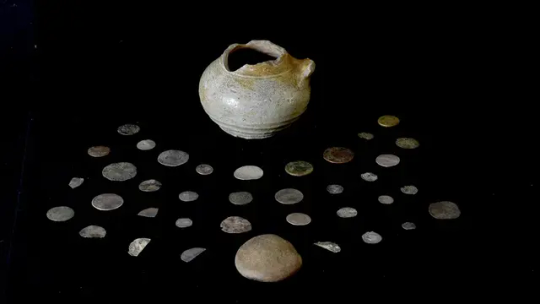
Scottish Coin Hoard Could be Linked to 1692's Glencoe Massacre
Coins found under a fireplace may have been hidden there by a victim of the infamous Massacre of Glencoe, according to archaeologists.
Almost 40 members of Clan MacDonald of Glencoe were killed in February 1692 after soldiers were ordered to attack them.
A student discovered the money at the site of a house linked to the clan's chief.
Lucy Ankers was on her first dig when she made the find.
The 36 coins were inside a pot which had a small round pebble as a lid and had been placed beneath a hearth stone slab in the fireplace.
The discovery was made in August during an excavation at the site of the ruined house, led by archaeologists from the University of Glasgow.
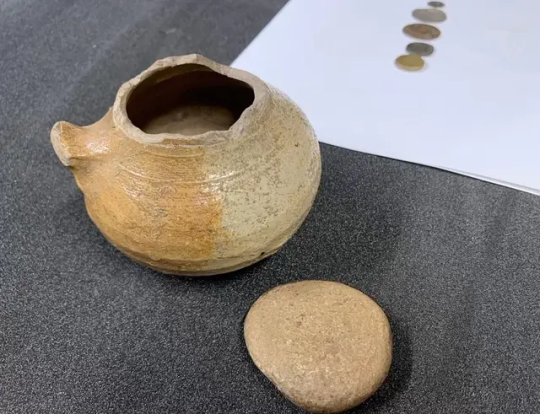
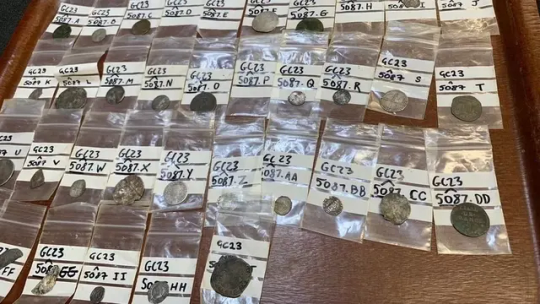
The property was associated with clan chief Alasdair Ruadh "MacIain" MacDonald of Glencoe.
He was among the estimated 38 people killed in the massacre.
Ms Ankers said: "As a first experience of a dig, Glencoe was amazing.
"The two weeks I spent digging solidified that I want to pursue a career within archaeology."
She added: "I wasn't expecting such an exciting find as one of my firsts, and I don't think I will ever beat the feeling of seeing the coins peeking out of the dirt in the pot."
The MacDonalds were targeted because of their support for the exiled King James VII of Scotland and II of England.
The clan backed the restoration of the Stuart dynasty to the British throne and had taken part in the first Jacobite Rising of 1689.
Historians say they were late delivering an oath of allegiance to the Protestant King William III, and had been branded as rebels by the Secretary of Scotland, Sir John Dalrymple.
In late January 1692, about 120 soldiers from the Earl of Argyll's Regiment of Foot arrived in Glencoe from Invergarry led by Capt Robert Campbell of Glen Lyon.
The troops were billeted with members of the clan, before turning on their hosts on 13 February.
Some people tried to escape in a snow blizzard to nearby glens, including Gleann Leac-na-muidhe, where the coin hoard was found.
The University of Glasgow has suggested a number of reasons why the money could be connected to the massacre.
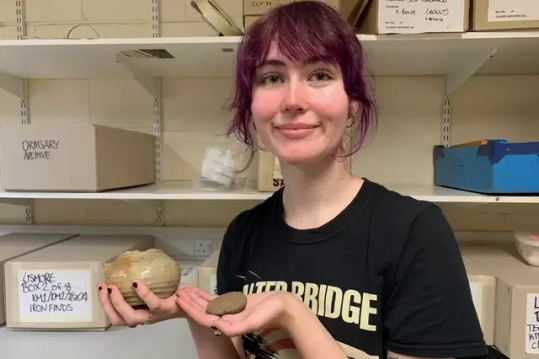
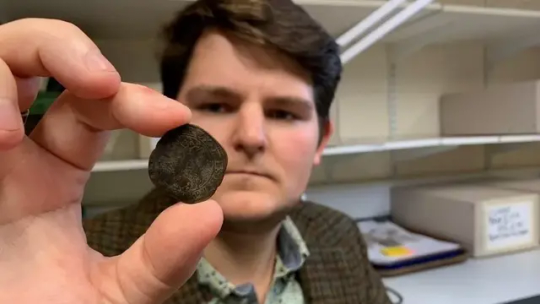
None of the coins were minted after the 1680s, which has led archaeologists to suggest they were most likely deposited under the fireplace either just before or during the killings for safekeeping.
The archaeologists also said whoever buried the coins did not return for them, possibly indicating they were among the victims of the massacre.
The coins are dated from the late 1500s through to the 1680s, and include pieces from the reigns of Elizabeth I, James VI and I, Charles I, the Cromwellian Commonwealth, and Charles II.
There were also coins from France and the Spanish Netherlands, as well as one coin which appears to have originated in the Papal States.
Dr Michael Given, a co-director of the archaeological project in Glencoe, said: "These exciting finds give us a rare glimpse of a single, dramatic event.

"Here's what seems an ordinary rural house, but it has a grand fireplace, impressive floor slabs, and exotic pottery imported from the Netherlands and Germany.
"And they've gathered up an amazing collection of coins in a little pot and buried them under the fireplace.
"It's a real privilege, as archaeologists, to hold in our hands these objects that were so much part of people's lives in the past."
University of Glasgow excavations director Edward Stewart added: "The excavation of MacIain's Summerhouse allows us to better understand the importance of these uplands to local elites.
"The scale of this structure and the wealth of artefacts uncovered within suggest this was a place where the MacDonald chiefs could entertain with feasting, gambling, hunting and libations.
"The discovery of this coin hoard within the structure adds an exciting dimension to this story.
"However, ordinary and everyday finds within this structure such as spindle whorls for making thread, a pitch fork and a dress pin, speak to the everyday lives of those who lived here, worked the land and minded the cattle."
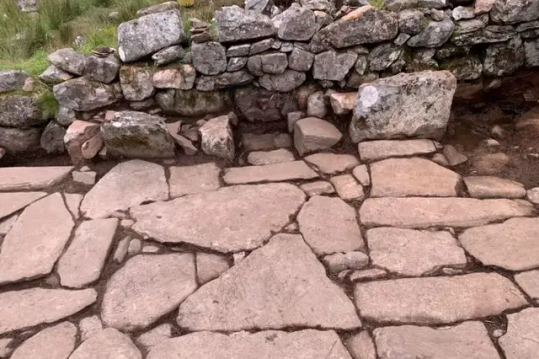
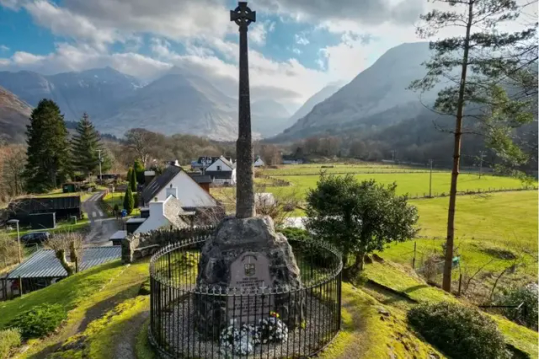
#Scottish Coin Hoard Could be Linked to 1692's Glencoe Massacre#Clan MacDonald of Glencoe#clan chief Alasdair Ruadh “MacIain” MacDonald of Glencoe#King James VII of Scotland#King William III#coins#collectable coins#ancient coins#ancient artifacts#archeology#archeolgst#history#history news#ancient history#ancient culture#ancient civilizations#scottish history
58 notes
·
View notes
Text

7 notes
·
View notes
Text
13th February
Valentine’s Eve

Source: History Extra website
The Nine of Diamonds is known as The Curse of Scotland, which allegedly had its origins in the notorious massacre of some thirty eight members of Clan McDonald at Glencoe on this day in 1692. Sir John Dalrymple, commander of the Royal army in Scotland was said to have used the card to wordlessly consent to the slaughter of the McDonalds by their mortal enemies the Campbells. The Campbells then went to Glencoe as guests of the McDonalds and promptly murdered their hosts, thus breaching all the sacred rules of Highland hospitality and damning the clan’s reputation forever.
The more prosaic truth is that the government of King William III, having already experienced one Highland rebellion in favour of the defeated Stuarts a few years earlier, wanted rid of the openly Jacobite McDonalds. Dalrymple was ordered to remove the threat. His army of mainly lowland Scots soldiers, aided by the collaborationist Campbells, attacked the McDonalds and pursued them in the snow through the pass of Glencoe, killing as many of the fugitive clansmen as they could find. The screams and curses of the slain can be heard on this night echoing from the forbidding cliff walls of Glencoe as the McDonald ghosts are forced to re-enact their grisly fate.
Glencoe in Gaelic means Valley of the Weeping.
#glencoe#massacre at Glencoe#the campbells#the McDonalds#king William III#jacobite rebellion#the nine of diamonds#the curse of Scotland
0 notes
Text

Jackobite trail, Glencoe Scotland
Glencoe is a picturesque village located in the Scottish Highlands, in the steep sided Glen Coe valley. It is widely known for the Glencoe Massacre in 1692, but also for its breathtaking scenery and abundant wildlife.
24 notes
·
View notes
Text

“Glencoe Highlands”
“The spectacular valley of Glencoe and its eponymous village lie in the north-west Scottish Highlands. Glencoe played a tragic role in the history of the country in the 17th century; a feud between two opposing clans ended in a bloody massacre. Looking at today's idyllic landscape with centuries-old pine trees, it is hard to imagine that this was once the site of a terrible tragedy.”
by Dario Fernando Marelli (Italy).
2023 European Wildlife Photographer of the Year
#dario fernando marelli#photographer#italy#glencoe hightland#glencoe#scotland#scottish highlands#european wildlife photographer of the year#nature#landscape
64 notes
·
View notes
Text
'Glencoe' by Douglas Alexander Stewart
Here's an atmospheric poem about the Massacre of Glencoe. My artwork shown isn't about the events of the terrible morning of 13 February 1692, it is this beautiful place as it is now, but there is an undeniable haunted feeling about the glen to this day…
'Glencoe' by Douglas Alexander Stewart
Sigh, wind in the pine; River, weep as you flow; Terrible things were done Long, long ago.
In daylight golden and mild After the night of Glencoe They found the hand of a child Lying in the snow.
Lopped by the sword to the ground Or torn by wolf or fox, That was the snowdrop they found Among the granite rocks.
Oh, life is fierce and wild And the heart of the earth is stone And the hand of a murdered child Will not bear thinking on.
Sigh, wind in the pine, Cover it with snow; But terrible things were done Long, long ago.

#Landscape#Glencoe#Scotland#Mountains#Highlands#Original Art#drawing#Pen And Ink#Colour Pencil#Mixed Media#Sketching#Mixed Media Drawing#Color Pencil#Gouache#pen and ink#ink drawing#Line Drawing#ink#Ink Art#painting#artwork#art#Traditional Art#Scottish Artist#Made In Scotland#Gift Ideas#Etsy
12 notes
·
View notes
Text
Answer the Questions and Tag 5 Fanfic Authors
tagged by @menina89, thank you. Doing this required more introspection than I initially thought, but it was a lot of fun 💕
1 . How did you get into writing fanfiction?
I had my first encounter with fanfiction when I was around 12 or 13 and discovered the (no-longer online) site myfanfiction.de. Back then I was really into twilight and so I created an account and started writing (in German). My first story was like 200 - 400 words per chapter and I think I gave up after 5 - 6 chapters. I posted a few more one-shots but honestly, the site was terrible and overly moderated. Two of my stories got banned for apparently being wrongly rated G and that was pretty frustrating. I wrote a few more stories for myself, but during most of high school and university years I only wrote assignments and papers. I stopped reading fanfiction altogether too for a while and only came back to it when discovering fanfiction.net and then ao3. There were so many stories and so much more engagement on those English sites, which was amazing. I did think about writing a few times but I was intimidated by the thought of doing so in English, which is not my mother tongue, so for years I was simply lurking in the shadows.
Then came 2022, which was a very rough year for me and induced a lot of anxiety, so in autumn after a spontaneous idea for a fic, I just started writing again to cope with some of those feelings. I posted the first chapter for the hell of it, but the Rogue One fandom was so nice and encouraging, that I just kept writing.
The idea for my first story in the Lockwood & Co. fandom was born because I was looking for a specific story I. When I could not find it, I simply wrote it myself.
2. How many fandoms have you written in?
Four fandoms I published something in. Probably one or two more, writing just for myself.
3. How many years have you been writing fanfiction?
The first fic on my ao3 account was posted October 2022.
In my teenage years maybe another 4 years ?
4. Do you read or write more fanfiction?
Definitely read.
5. What is one way you’ve improved as a writer?
Writing multi-chapters. I used to lose interest in them pretty quickly. But I’ve actually finished 2 in the last one-and-a-half years, which I am actually kind of proud of.
Other than that, I like to think that my English has gotten better (I hope) and I am less critical of myself, actually enjoying reading my own stories once in a while.
6. What’s the weirdest topic you researched for a writing project?
I once went down a rabbit hole researching the Jacobite uprising and the Glencoe massacre, including watching a 1,5 h documentary (for a 1000 word case fic). That was probably the most niche topic.
Other than that, I often research medical conditions, to not get them completely wrong. I did a lot of research on pregnancy and childbirth, including making a detailed calendar on gestational age and events that should take place. I generally like to make timetables for longer fics, to get the seasons and months right and to not give a month too many days. 😉
7. What’s your favorite type of comment to receive on your work?
I love each and every comment. I maybe tend to reread comments more often of people pointing out things they liked, their favourite part, or swooning over characters. Also, when someone catches a hidden meaning or reference to another chapter, that is really amazing. But honestly, every comment makes my day and puts a huge smile on my face. 🥰
8. What’s the most fringe trope/topic you write about?
Probably struggles with fertility. Other than that I think I’m pretty mainstream.
Though, I wrote a Christmas market one-shot set in the city I live in once, which could be considered niche because of the non anglo-american or British setting.
9. What is the hardest type of story for you to write?
It takes me a long time to write descriptions. Often there is a scene in my head that I want to bring to paper (or computer screen). But then I realize that I lack the vocabulary to formulate the sentences as flowery and beautifully as I’d like. So, I end up googling words for hours.
10. What is the easiest type?
Fluff. I love writing tender scenes between characters.
But also Angst, I think. Probably because I am a very anxious person.
11. Where do you do your writing? What platform? When?
On my computer. I write in MS word. Then I copy the whole text into google docs, and do the editing there.
Most ideas come to me while commuting, going for a walk, or showering. So, I either take quick notes on my phone or actually sit down and type it into my laptop, if I have time. Mostly, I end up writing in the evening, but I am actually more productive in the morning (again if there is time)
12. What is something you’ve been too nervous/intimidated to write, but would love to write one day?
Smut.
13. What made you choose your username?
I chose it, because I am a microbiologist at heart. It could be argued that Saccharomyces cerevisiae, also known as bakers’ yeast, is one of humanity's oldest production animals. It is also one of the first microorganisms I was able to observe under a microscope and I think the cells look adorable. Apparently, someone else thought so too, because the username was already taken. That’s why I chose Saccharomyces_97
Tagging: @alphacrone @woahpip @oceanspray5 @cate-deriana and @the-biscuit-agreement (I'm terribly late and don't know who has done this before. So sorry, in case of double tag 😉 )
9 notes
·
View notes
Text
How to plan an adventures budget trip from Edinburgh to Loch Ness for 7 days
Introduction
Just consider what the trip can offer you – a powerful medieval spirit of Edinburgh, magnificent and legendary Loch Ness, hospitable Highland Inverness. Priced at £2000 per each traveler, this trip includes the history, nature, and adventurous span of 7 days + 6 nights. Alright let us analyze this remarkable touristic program.

Places to Explore
Edinburgh
Scotland’s capital, known for its medieval Old Town and elegant Georgian New Town, is rich in history and culture. Iconic landmarks like Edinburgh Castle and the Royal Mile draw visitors, while its vibrant festivals, including the Fringe, make it a cultural hub.

Oban
A picturesque coastal town famous as the "Seafood Capital of Scotland." It's the gateway to the Hebridean Isles and offers stunning views, fresh seafood, and historic sites like McCaig’s Tower.

Glencoe
Renowned for its dramatic landscapes and historical significance, Glencoe is a paradise for hikers and photographers. Its rugged peaks and valleys tell tales of the infamous 1692 massacre.

Loch Ness
Famous for the legend of Nessie, this deep freshwater loch captivates visitors with its mysterious allure. A boat tour offers scenic views and a chance to spot the elusive monster.

Benefits of Visual Storytelling for Travel
The use of an interactive travel guide is an innovative way of presenting an itinerary. With additions of historical and cultural information to maps, the latter could generate great experiences and recommendations. It is possible to interact with maps by tracing routes, zooming in on scenes of interest, you may also pinch to view attractions on the way.
Plan Your Adventure
The following itineraries suit anyone who is interested in history & nature, and I understand that, for those seeking extraordinary travel experiences, it cannot be beaten. Ready to make your own adventure? Therefore, start planning and let the Highlands take you where you have never been before.
Conclusion
Ready to explore Scotland’s wonders?
You can check out the entire 👉Story here👈
Dive into this curated itinerary and let the maps guide your journey!
#StorybyMAPOG#StoryOnMaps#ScotlandTravel#EdinburghToInverness#HighlandAdventure#LochNess#TravelItinerary#ScottishHighlands#GlencoeViews#BudgetTravel#NatureAndHistory#AdventureAwaits#ExploreScotland
3 notes
·
View notes
Text
@parsleyroot thank you for the tag!! <3
Rules: Put your playlist on shuffle, list the first five songs that come up and let people vote on which song they like the most.
tagging @thalassiokhtos @sapphic-hobbit @faramircaptainofgender and @armillaryspheres!
#voted dreamer's ball for you it's one of my favourite songs of all time ever#tag game#my post#i dont know which one of mine i like best tbh normally id go for the corries but i dont like this one As much..#i love the cruel mother a lot maybe it's that one#but have a cuppa tea is really fun too and i know it's over is just in general really nice. you have to be in a certain mood for tom petty#im listening to a lot of donovan at the moment and hes pretty far from tom petty so i wouldn't go for that at the moment#god i dont know...... i cant pick. I'll have to wait the 24 hours to see what you lot think
3 notes
·
View notes
Note
hiiiiiiii Radegonde 😤😤 can we get a prince and heretic post 🤑🤑 i need everyone here to know about Renée my angel (also more propaganda for mrs bowen🤌🤌🤌)
That, my friend, I can do! You wanted a post on Marjorie Bowen's work with a focus on Renée le Meung, the protagonist of two of Bowen's novels, which you shall have!
The author

Margaret Gabrielle Vere Long, also known as Marjorie Bowen. Photograph, cropped, undated, presumably 1910s, around the time she wrote her Dutch history novels.
Marjorie Bowen was the pen name of British writer Margaret Gabrielle Vere Long (1885-1952), whose novels were, in her time, quite well-read and critically acclaimed (she, for instance, received fan mail from one Arthur Conan Doyle), but are largely forgotten today. Under several pen names, the most prolific being that of Marjorie Bowen, Vere Long published novels and short stories ranging in genre from crime to ghost stories, to contemporary and historical fiction, with the latter making up the most extensive category of her work.
She published her first novel, The Viper of Milan, in 1906. Her first as much as her later later novels showcase her unique style of writing, which relies on rich, opulent, yet purple-prose-free descriptions that allow the setting to come to life, and a great deal of historical reasearch, into which she manages to weave a gripping fictional plot.
Marjorie Bowen and Dutch history: The William of Orange series
Following the successful launch of The Viper of Milan, Bowen published The Master of Stair (American title: The Glen O'Weeping) in 1907. This is the first novel featuring, if you will, a cameo appearance of the subject of her later, and perhaps best-known triology of novels on William of Orange (1650-1702). Revolving around the Glencoe Massacre, William, then King William III, features as some sort of antagonist to the hero of the story. While not coming across as well-written and multi-dimensional as in later novels, it is evident that Bowen had an interest in William III, which she, three years and much research later, would put to paper in another project, the William of Orange triology.
From 1910 to 1911, Bowen, published her arguably most famous work, the William of Orange triology (I Will Maintain (1910); Defender of the Faith and God and the King (both 1911)), which went through a double-digit number of editions in the 1910s alone.
While Bowen is strongly sympathetic to her protagonist, William of Orange (1650-1702), to the point that she may have somewhat identified with him on account of her 'outsider' nature within her own family, something she saw reflected in the historical William of Orange (see e. g. Tibbets, John C.: The Furies of Marjorie Bowen (2019), p. 70, which includes an analysis of the series including potential autobiographic links), whom she researched with astonishing detail, she does not necessarily write William as a sympathetic character, which given the time of Bowen's writing her series would presumably have been an expected characterisation within the idiological frame of British imperialism (which does show in other ways, Bowen and her books being a product of their time), but rather depicts him as a flawed, driven and profoundly lonely man who in the end leaves the reader to question if perhaps he overreached his initial achievements, and personal happiness, in a quest for ever more and ultimately inobtainable glory.
Another interesting feature of the series is Bowen's realistic depiction of William of Orange's chronic illnesses, particularly his asthma.
The novels' most striking quality is however that William of Orange was written as what we might call distinctly neurodivergent and very likely asexual, which is intriguing, taking into account that even the term autism was not yet introduced into scientific language until 1911, when the second and third novels were published.
Three years after the release of volume 2 and 3 of the William of Orange triology, Bowen, presumably as a sort of prequel to the William of Orange novels, turned her head to write two novels about the first William of Orange (1533-1584), great-grandfather to the man she portrayed in the 1910-1911 triology through his youngest son Frederick William, and the latter's son, another William.
Prince and Heretic (1914) and William, by Grace of God (1916) (...and Renée)

The face Renée le Meung cannot resist
This time, the focus lies not so much on a historical figure cast as main character as on a fictional protagonist who skirts the edges of (this) William's orbit: her name is Renée le Meung, a young, exiled Dutchwoman orphaned by the religious persecution of the counter-reformation in the Spanish Netherlands who earns her upkeep by working in the household of princess Anna of Saxony, a wilful, vain and youthfully immature German princess set to marry William of Orange.
It is in Anna's retinue that Renée comes into some measure of contact with William whom she is at first infatuated, then downright obsessed with, both romantically, and increasingly politically as the tensions between William of Orange and the Spanish Habsburgs are about to culminate in the Eighty Years' War.
With her prequel duology to the William (III) of Orange series, Bowen followed a very similar recipe as with the novels in the triology; again, her main character is a socially isolated, lonely orphan mainly carried through life by their personal faith who sees themself as being not like their peers.
Renée's character can, somewhat tongue-in-the-cheek, be summed up as what would happen if Victor Hugo's Éponine Thénardier had been a 16th century monarchist with access to that one Radiohead song (you know the one).
Over the course of two novels, Renée's life from young adulthood to middle age is laid out, her fortunes, by her own choice, ever-intertwined with those of William of Orange.
She endures physical abuse at the hands of his first wife, endears herself to William's mother, jealously eyes his subsequent wives, some of whom she ends up working for, travels around to be close to him, and gives up on a number of opportunties that would have allowed her the possibilities of a less strenuous life, perhaps even love, and a family of her own.
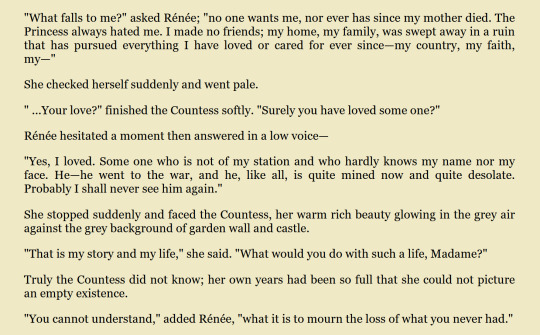
Oh, the awkwardness of almost confessing your crush to... his mother!
Her most outlandish show of devotion to the man she idolises comes into being when she adopts an orphaned baby whose father died in a battle William also lost two brothers in, and whom the local and rather patriotic parson had christened Wilhelmina in honour of William.
Ironically, Renée's life seems to take a turn for the healthier once she takes on the responsibility of caring for little Wilhelmina; she starts socialising, no longer considers herself lonely as she has developed a newfound interest in life, and dotes on her foster daughter- only to, at the next possible moment, slink off to stand under William's window in the small hours of the morning again once the opportunity materialises (but not without arranging for a child minder for her daughter in the mean time).

Renée is very normal. Very normal. Nothing to see here.
Sadly however, things cannot go on like this forever...
Final thoughts
Bowen's novels are enjoyably written historical fiction and easily accessible being in the public domain. They're products of their time, of course, but Bowen surprises the reader by her choice of main characters who often astonish, rather than confirm the reader's expectations of the genre: her main characters are autistic war criminals and celebrity-stalking single mothers in thorougly-researched and sumptuously described historical settings, offering a refreshing take on the genre.
When they were first published, Bowen's novels were marketed as "historical romances", which could not be further from the truth; while love, and the humanity and self-discovery inherent in loving another person are themes explored with both Renée and William III in the 5 Dutch history novels, Renée's unrequited devotion to the man she loves remains unspoken, unacted upon, and only in the third volume of the triology does romantic love feature for William III through the experience of losing his wife, and having to live with the knowledge that he made many mistakes in an initially difficult relationship.
While I am personally not averse to the odd historical romance novel, I enjoy the fact that Bowen's historical fiction veers off the beaten path here: her novels are not so much about finding a perfect happily-ever-after, but living in a world of difficulty, and the different shapes relationships, and consequentially, love, can take over time, and how they alter the people involved; William III discovers that life is about more than conquering and sticking it to France as he, looking back on their marriage, at last seeks Mary II's forgiveness for his past behaviour around her when they were newlyweds and Renée, through all odds, gains the attention, and, within the possibilities of their vastly different social status, even confidence and friendship of the man she secretly loves.
If William III's quest for glory, and Renée le Meung's quest for love (or at least being close to the man she loves) have one thing in common, it is that in the end, a goal, the fantasy of a happy end, inobtainable even perhaps, does not matter so much as the path life sends one on, and what we choose to make of it.
I can only warmly recommend Bowen from the comparatively few novels of hers I have read so far!
#ask#ask reply#defensivelee#20th century#16th century#17th century#18th century#marjorie bowen#books and literature#books and reading#british history#historical fiction#book reccs#book review
8 notes
·
View notes
Text
The Monarch of the Glen!
Glencoe is one of the most famous and historic glens in Scotland. The first historical figure connected with Glencoe was Fingal, one of the greatest Celtic heroes and leader of the Feinn, warriors of Gaelic mythology.
The MacDougall clan were in possession of Glencoe from the 11th century until their collapse in 1308 when they sided with John Balliol against Robert the Bruce. In a gesture of thanks for his support, Robert the Bruce gifted Glencoe to Angus Og, clan chief of the MacDonalds. There then followed a period of relative calm until 1501, when disputes arose between the Glencoe MacDonalds and the Argyll Campbells, continuing into the Scottish Wars of the Covenant
The final chapter in this tragedy began when King William Ill offered a pardon to all Highland clans who had fought against him on condition that they took the oath of allegiance by 1 January 1692. Maclain, MacDonald Clan Chief, reluctantly agreed to take the oath, but mistakenly went to Inverlochy instead of Inveraray. He finally reached Inveraray on January 6th, well after the deadline.
MacDonald mistakenly believed that he and his clan were now safe, however a force had already been assembled at Inveraray. Despite showing hospitality to the Campbell force for 10 days, they would go on to massacre the MacDonalds. A monument to the fallen MacDonalds is situated in the Glencoe village.

Over the next few centuries ownership of Glencoe passed through several hands and in 1935 the National Trust for Scotland bought 12,800 acres of the glen

#glencoe #scotland #nature #wildlife #deer #mountains #history #explore #travel #glen #mountains #visitscotland

Posted 28th March 2024
2 notes
·
View notes
Text
Get to Know Me
Tagged by @blasphemous-lies-and-deceit
𖦹°‧★ Favourite song(s): Rosemary Clooney's version of "A Nightingale Sang in Berkeley Square"; "Right Field" by Peter, Paul, and Mary; "Flying Dreams" from the end of The Secret of NIMH, as sung by Paul Williams; "If We Hold On Together" from the end of The Land Before Time, as sung by Diana Ross; "Wild Montana Skies" by John Denver; "Lies" by Stan Rogers; "Stained Glass" by Danny Schmidt; and "Panthers on the Mountainside" by Jon Charles Dwyer. (I like a lot of songs, really, but these are some perennial favorites.)
𖦹°‧★ Favourite colour(s): Purple, grey, blue, and certain shades of green, in that order.
𖦹°‧★ Currently Watching: I'm partway through a rewatch of the original run of Blue's Clues. And also partway through a rewatch of the original Dark Shadows.
𖦹°‧★ Last Movie: The Last Voyage of the Demeter.
𖦹°‧★ Sweet, spicy or savory: Yes please.
𖦹°‧★ Relationship Status: Lowkey wishing I knew where to look for one as an asexual arofog, tbh.
𖦹°‧★ Current Obsession: TMA. I know, you're shocked.
𖦹°‧★ Last thing I googled: The Glencoe Massacre of 1692. Don't ask.
Tagging @jaz--hands, @fridayyy-13th, @ellieloves2read, @ent-is-undecisive, and anyone else who wants to give it a go. (As always, no pressure!)
6 notes
·
View notes
Text

5th January 1692 saw the MacDonalds of Glencoe finally sign the oath of allegiance to King William III at Inveraray.
This was five days after the official deadline; and gave the authorities the excuse to "extirpate" this troublesome Jacobite clan, leading to the infamous Glencoe massacre.
On 27 August 1691 King William offered the Highland clans a pardon for their part in the first Jacobite rising - if they agreed to pledge allegiance to him before New Year’s Day. The oath had to be made before a magistrate. Many Highland Chiefs waited for word to come from the exiled King James before they took the oath.
Alasdair MacIain, the Chief of Glencoe, arrived at Fort Willliam on 31 December 1691 to take the oath but was told that he would have to travel some 70 miles to the sheriff at Inveraray. MacIain finally took the oath on 5th January 1692. He was given assurances that his allegiance would be accepted and that he and his people - the McDonalds of Glencoe - were safe.
John Dalrymple, Master of Stair, was the Secretary of State. He was hoping for an excuse to make an example of one of the Highland Clans. When he heard that Alasdair MacIain had not sworn allegiance by 31st December he was delighted.
I shall pick up from this point in a little over five weeks.
19 notes
·
View notes